The Noble Society of Celts, is an hereditary society of persons with Celtic roots and
interests, who are of noble title and gentle birth, and who
have come together in a search for, and celebration of, things Celtic.
"Summer 2011"

The ‘Auld Alliance’
The ‘Auld Alliance’ was an alliance between Scotland and France. It played a significant role in Franco-Scottish (and English) affairs from its beginning in 1295 until the 1560 Treaty of Edinburgh. It was renewed by all the French and Scottish kings and queens of that period except for Louis XI. By the late 14th century, the renewal occurred whether there was an English threat to other of them or not. Norway was also sometimes included in the treaties.
The alliance dates from the treaty signed by John Balliol, King of Scotland, and King Philip IV of France in 1295 against King Edward I of England (also known as ‘Long Shanks’ and as the ‘Hammer of the Scots’).
The terms of the treaty stipulated that if either country was attacked by England, the other country would invade English territory, as became evident at the Battle of Flodden Field in 1513 AD.
The alliance is normally dated to 1295, but J. D. Mackie dates it earlier: to 1173. At this time, the Angevin kings of England were increasing in power. Due to this, King Louis VII of France and ‘William the Lion’ (King William I of Scotland) both supported a rebellion against the English king. Elizabeth Bonner also talks of "informal cooperation" between the two countries at this time.
In 1326, ‘Robert the Bruce’ (King Robert I of Scotland) renewed the alliance, with the Treaty of Corbeil. During the 1300s and 1400s, the treaty was invoked six times.
Between 1331 and 1356, King Edward III of England defeated the kings of both countries. Bonner believes that the alliance meant that he did not succeed in subjugating them.
In 1336, at the beginning of the ‘Hundred Years War’, King Philip VI of France provided military support for King David II of Scotland, who fled to France after being deposed by King Edward III of England. In 1346, under the terms of the ‘Auld Alliance’, Scotland invaded England in the interests of France. However, they were defeated, and David II was taken prisoner at the Battle of Neville’s Cross
French and Scottish forces together won against the English at the Battle of Bauge in 1421 AD. As it marked the turning point of the ‘Hundred Years War’, the significance of this battle was great. However, their victory was a short-lived one: at Verneuil in 1424 AD, the Scots army was annihilated. Despite this defeat, the Scots had given France a valuable breathing space, effectively saving the country from English domination.
In addition, in 1429 Scots came to the aid of Joan of Arc * in her famous relief of Orleans. .
* Joan is a national heroine of France and a Catholic saint. A peasant girl born in eastern France, she led the French army to several important victories during the ‘Hundred Years War’, claiming divine guidance, and was indirectly responsible for the coronation of King Charles VII of France. She was captured by the Burgundians, sold to the English, tried, and burned at the stake when she was nineteen years old.
Joan is a national heroine of France and a Catholic saint. A peasant girl born in eastern France, she led the French army to several important victories during the ‘Hundred Years War’, claiming divine guidance, and was indirectly responsible for the coronation of King Charles VII of France. She was captured by the Burgundians, sold to the English, tried, and burned at the stake when she was nineteen years old.
Many Scottish soldiers chose to settle in France. Some were granted lands and titles in France. In the 1400s and 1500s, they became naturalised French citizens.
In 1560, after more than 250 years, formal treaties between Scotland and France was officially ended, by the ‘Treaty of Edinburgh’. At the height of the anti-Catholic ‘Reformation’ in Scotland, the politically all-powerful Lowland ‘Covenantors’ (Presbyterians) declared Scotland was Protestant, and allied Scotland with Protestant England instead. (The Highlands remained Catholic.)
Although principally a military and diplomatic agreement, the alliance also granted "dual citizenship" in both countries. Thus, its influence also extended into the lives of the Scottish population in a number of ways: including architecture. Law, the Scots language and cuisine, due in part to the Scottish mercenaries participating in French armies. Part of the influence on law was due to Scots often going to French universities, something which continued up until the Napoleonic Wars. Other intellectual influences from France continued into the 18th century as well. Examples of architectural influence include two Scottish castles built with French castle-building in mind: Bothwell and Kildrummy. Scots also enjoyed having their choice of France's finest wines. At its height the French language was widely spoken in Scotland.
Certain provisions of the earlier treaty remained in force. In particular, all Scots were still French citizens, until that right was revoked by the French government in 1903.
In 1942, when General Charles de Gaulle * was in Scotland, he described the alliance between Scotland and France as “the oldest alliance in the world”.
* Charles de Gaulle was a French general and statesman who led the Free French Forces during the Second World War. He later founded the French Fifth Republic in 1958 and served as its first President from 1959 to 1969. In France, he is commonly referred to as Général de Gaulle or simply ‘Le Général’.
Charles de Gaulle was a French general and statesman who led the Free French Forces during the Second World War. He later founded the French Fifth Republic in 1958 and served as its first President from 1959 to 1969. In France, he is commonly referred to as Général de Gaulle or simply ‘Le Général’.
De Gaulle was born in Lille. He was raised in a family of devout Roman Catholics who were nationalist and traditionalist, but also quite progressive.
De Gaulle's father, Henri, came from a long line of aristocrats from Normandy and Burgandy, while his mother, Jeanne Maillot, descended from a family of rich entrepreneurs from the industrial region of Lille in French Flanders … his mother’s ancestors included members of the old Irish ‘Wild Geese’, exiled to France in the 1600s.
While serving during the First World War, he reached the rank of captain, commanding an infantry company. He was wounded several times, one of them in the left hand, as a result of which he wore his wedding ring on his right hand in later life. He was captured at Douaumont in the Battle of Verdun in March 1916. After the armistice, de Gaulle continued to serve in the French army and on the staff of General Maxime Weygand’s military mission to Poland during its war with Communist Russia (1919–1921), working as an advisor to Polish infantry forces. He distinguished himself in operations near the River Zbrucz and won the highest Polish military decoration, the Virtuti Militari.
In the 1920s and 1930s de Gaulle came to the fore as a proponent of armoured warfare and advocate of military aviation, which he considered a means to break the stalemate of trench warfare. During the Second World War, he reached the temporary rank of Brigadier General, leading one of the few successful armoured counter-attacks during the 1940 ‘Fall of France’ campaign, and then briefly served in the French government as France was falling. He escaped to England and gave a famous radio address in June 1940, exhorting the French people to resist Nazi Germany and organised the Free French Forces with exiled French officers in England.
He gradually obtained control of all French colonies - most of which had at first been controlled by the pro-German Vichy regime - and by the time of the liberation of France in 1944 he was heading a government in exile, insisting that France be treated as an independent great power by the other Allies. De Gaulle became Prime Minister in the French Provisional Government, resigning in 1946 due to political conflicts. After the war he founded his own political party, the RPF. Although he retired from politics in the early 1950s after the RPF's failure to win power, he was voted back to power as Prime Minister by the French Assembly during the May 1958 crisis.
The Auld Alliance is still alive and well in the hearts of all true Jacobites
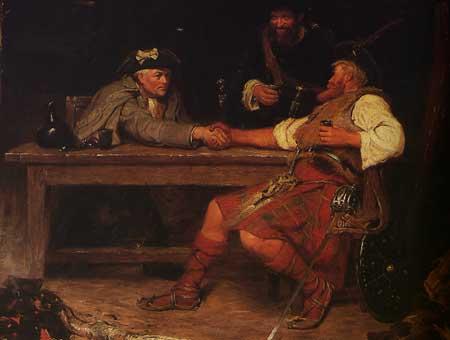

King John Balliol and his wife
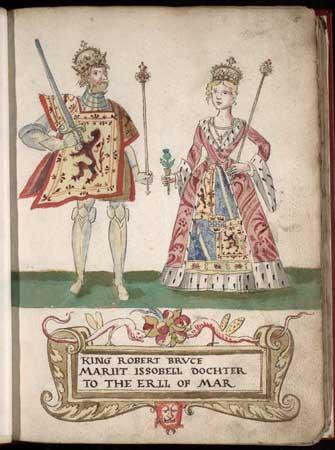
Robert the Bruce and Isabella of Mar
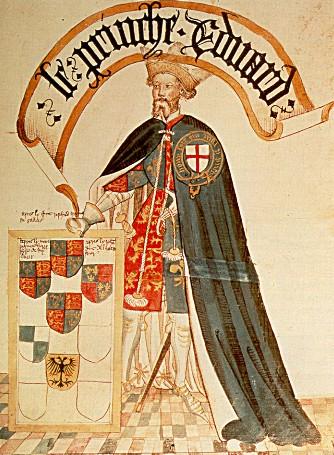
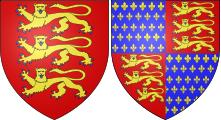
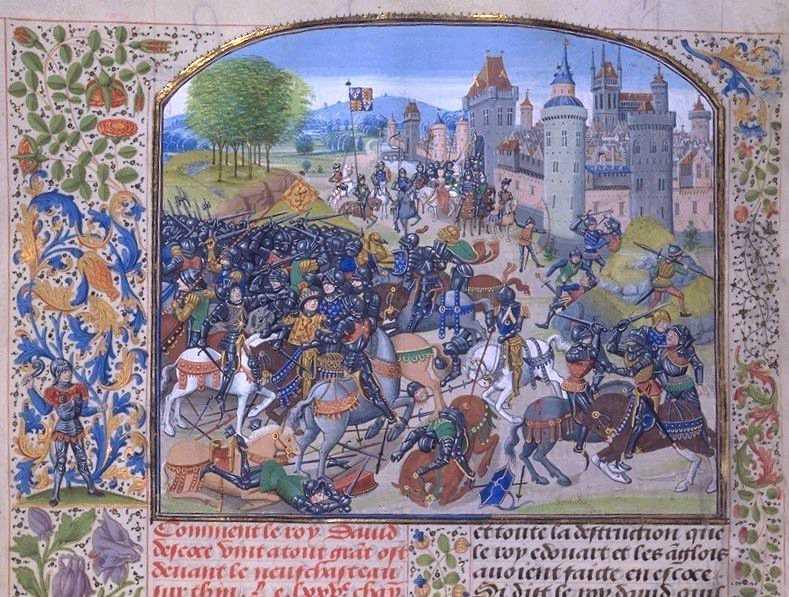

Joan of Arc at the coronation of King Charles VII
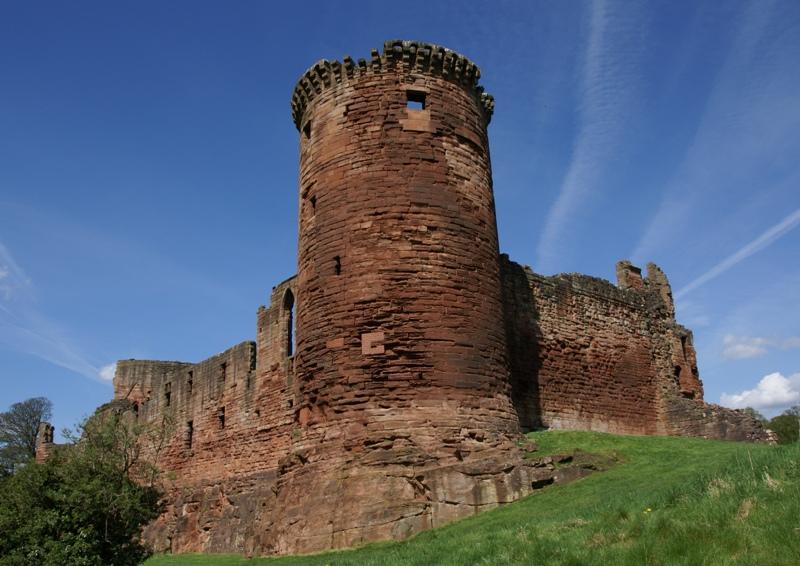
South-east tower of Bothwell Castle
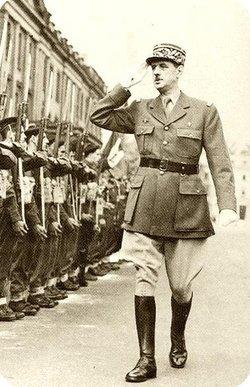
General de Gaulle
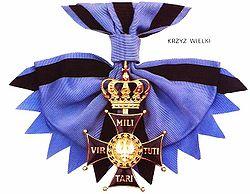
Order Virtuti Militari
(Latin for ‘To Military Valour’)
Poland’s highest award for bravery in the face of the enemy
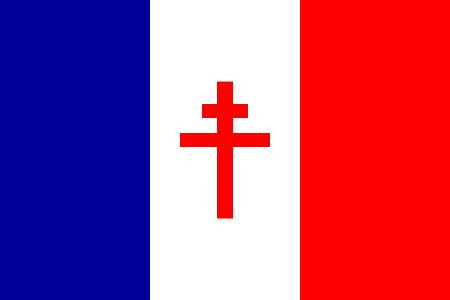
Flag of Free France 1940-1944

’Jacobites’ by John Pettie